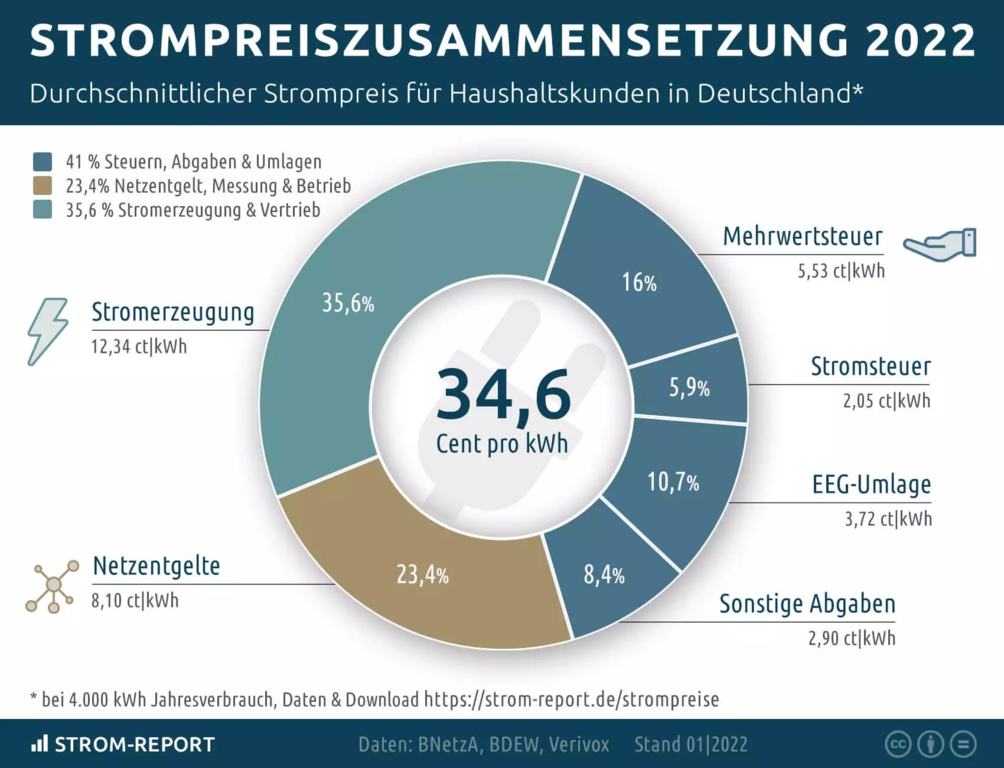With the elimination of the EEG levy on the electricity price, the Federal Government wants to relieve citizens of the burden of energy costs from July 2022. The EEG levy, with the corresponding share of VAT, currently amounts to around 4.4 cents per kilowatt hour (kWh). A sample household with a consumption of 4000 kWh would pay around 177 euros less per year for electricity with the abolition. However, this relief does not come close to compensating for the previous increase in electricity prices.
103 basic suppliers have already announced price increases as of June
According to an analysis by the comparison portal Verivox, basic suppliers have already implemented 740 price increases in the first half of 2022. The average increase was 20 percent. As of June of this year, several suppliers have already announced a total of 103 price increases averaging 19.6 percent. For the affected customers, this means that the electricity price is rising despite the reduction in the EEG levy, which is only about 12 percent. This makes electricity more expensive for the sample household affected. Despite the elimination of the EEG surcharge, the household has to pay an average of another 78 euros per year.

Bild: Unknown author, CC BY-SA 4.0, via Wikimedia Commons
Energy suppliers invoke high procurement prices
According to Verivox, the reason given by the energy suppliers is the sharp rise in procurement prices for electricity. With the war in Ukraine, a reduction in costs for consumers is not in sight, according to energy expert, Thorsten Storck: “In view of the exploding wholesale prices, we expect further electricity price increases in the second half of 2022. The abolition of the EEG levy will only mitigate this development,” says Strock about the current price development.
Suppliers are legally obliged to pass on the waiver of the EEG surcharge
Energy suppliers must pass on the elimination of the EEG surcharge to customers. They are legally obliged to do so. According to the Verivox survey, however, only just under 30 of the more than 800 electricity suppliers have announced a corresponding relief so far. Storck assumes that the majority of electricity suppliers will treat the abolition of the EEG surcharge like the temporary reduction of VAT in 2020. The relief will be offset against the next electricity bill.
Promotion of renewable energies now takes place from tax revenues
With the introduction of the EEG levy in 2000, the state promotes the expansion of solar, wind, biomass and hydropower plants. The operators of these plants receive a price guarantee for their generated electricity over a period of 20 years. The difference between the market price and the guaranteed price is financed through the EEG levy. With the abolition of the EEG levy on the electricity price, financing will in future come from taxpayers’ money. This means that the state does not save anything at first, but merely helps itself to financing from another pot. Instead of electricity customers, it is now the taxpayers who pay.
